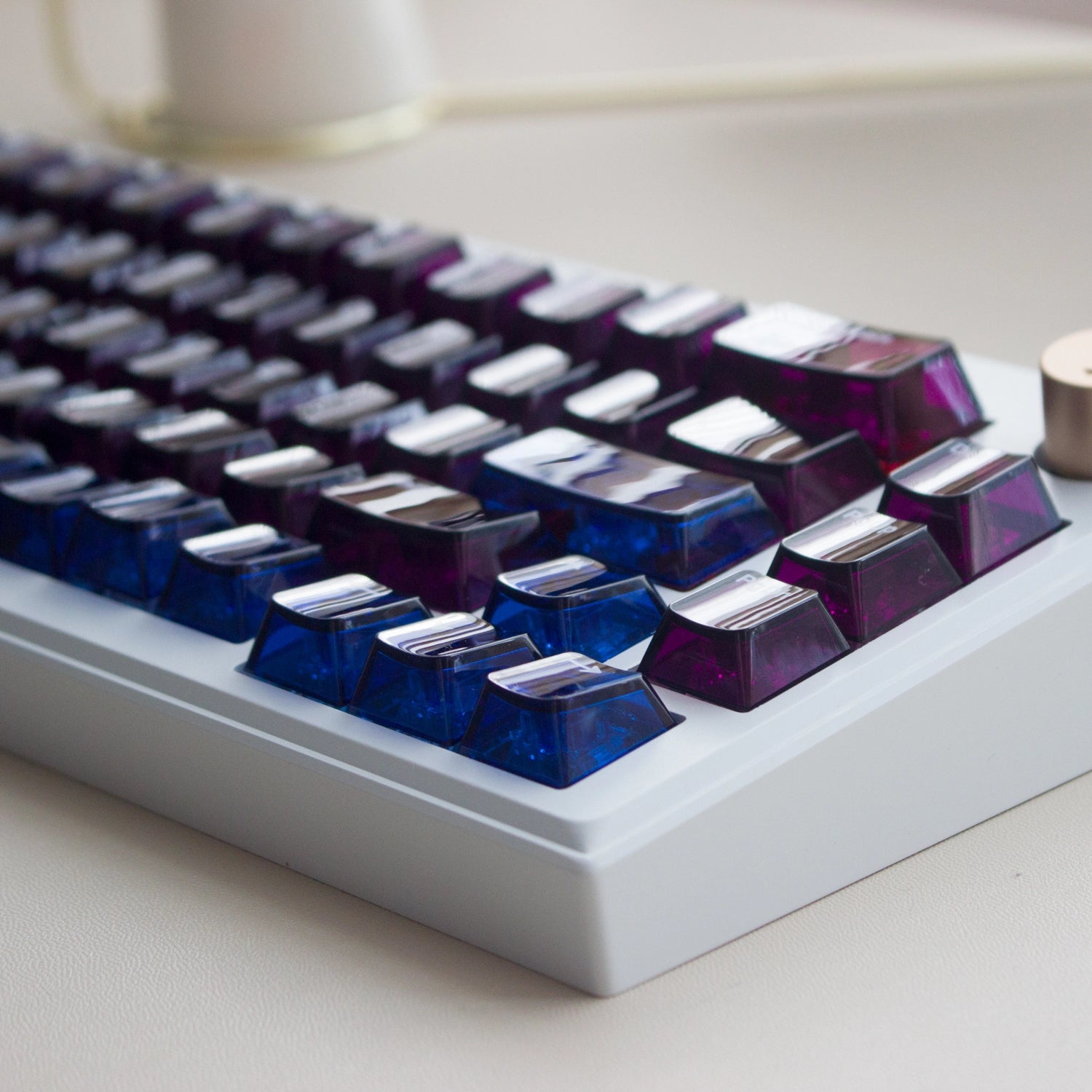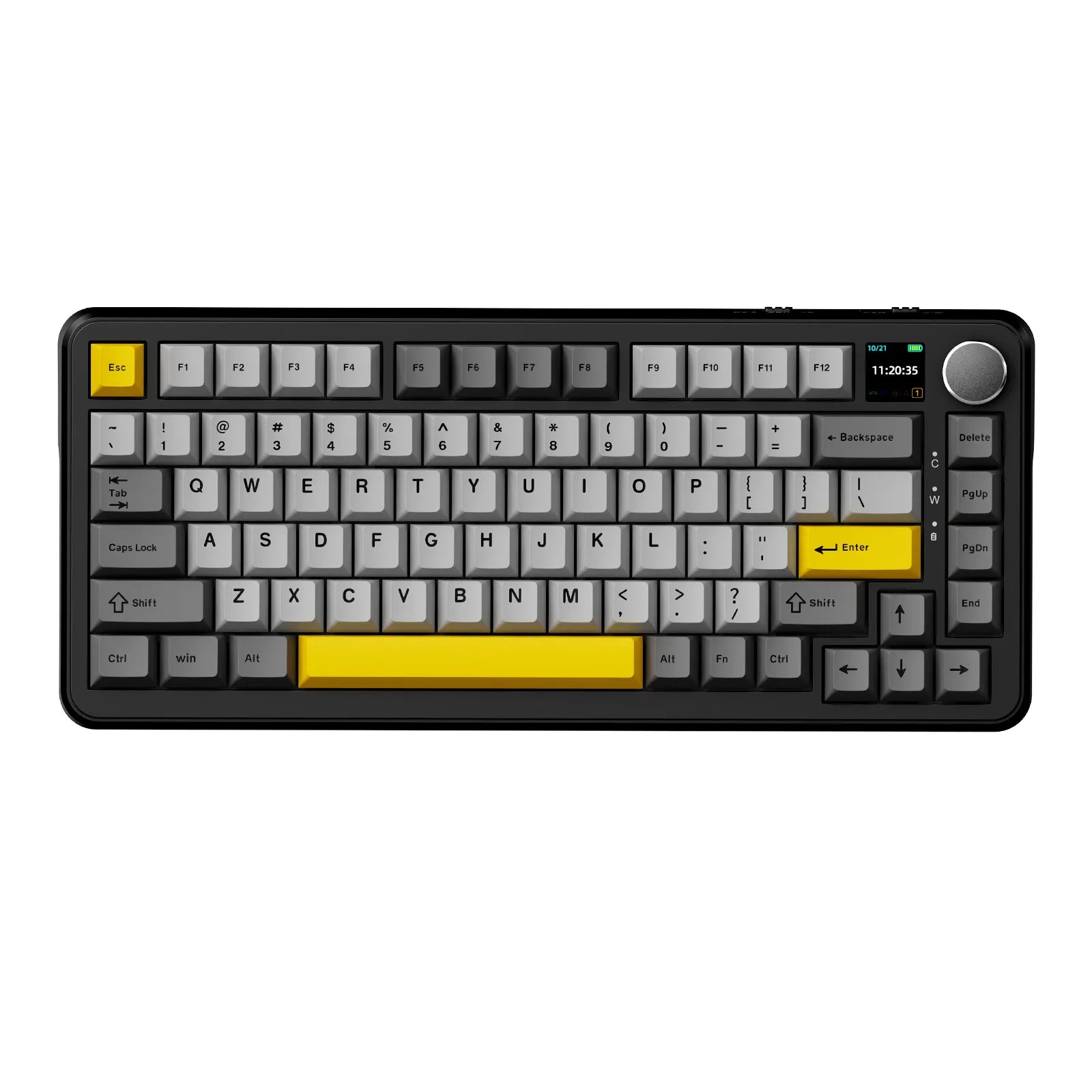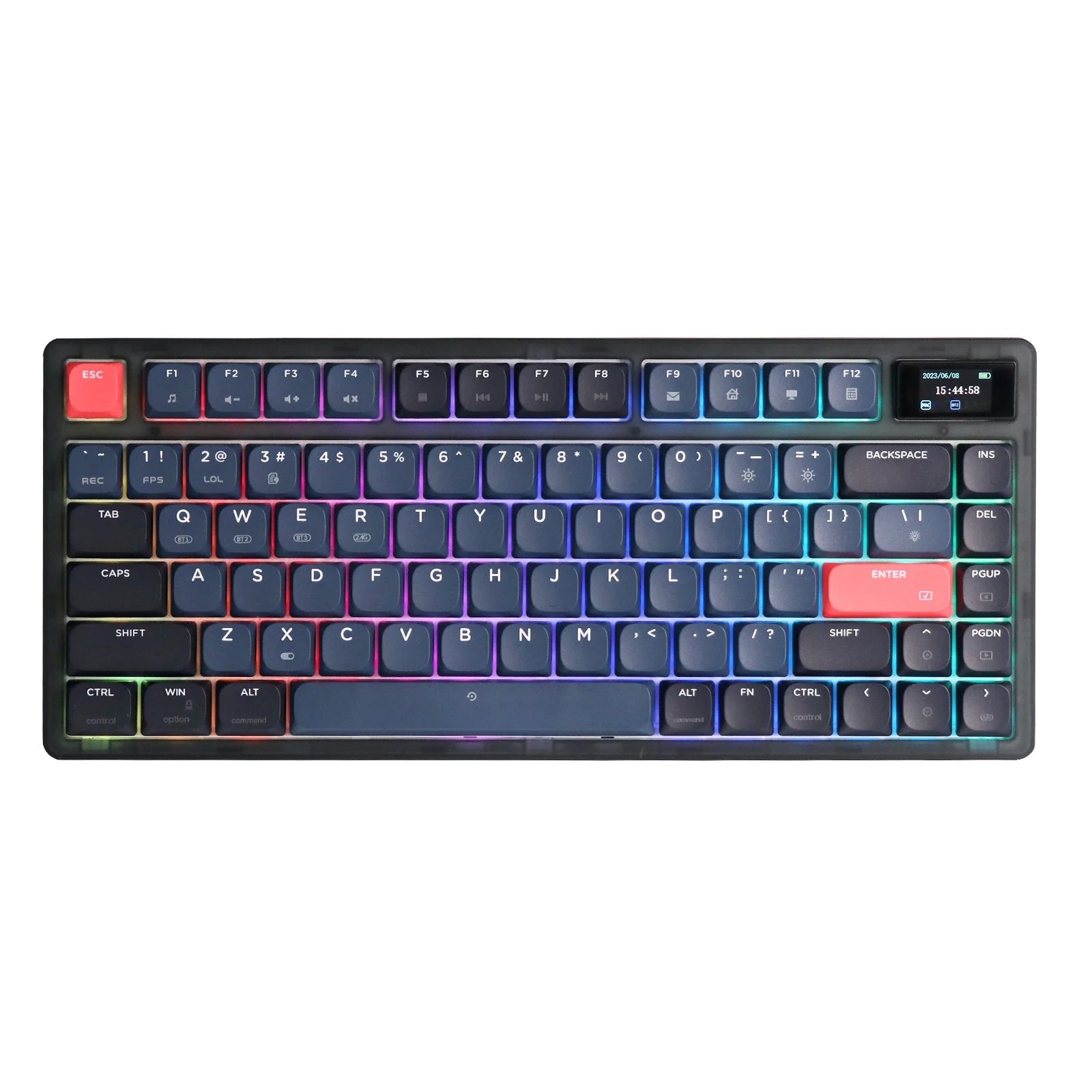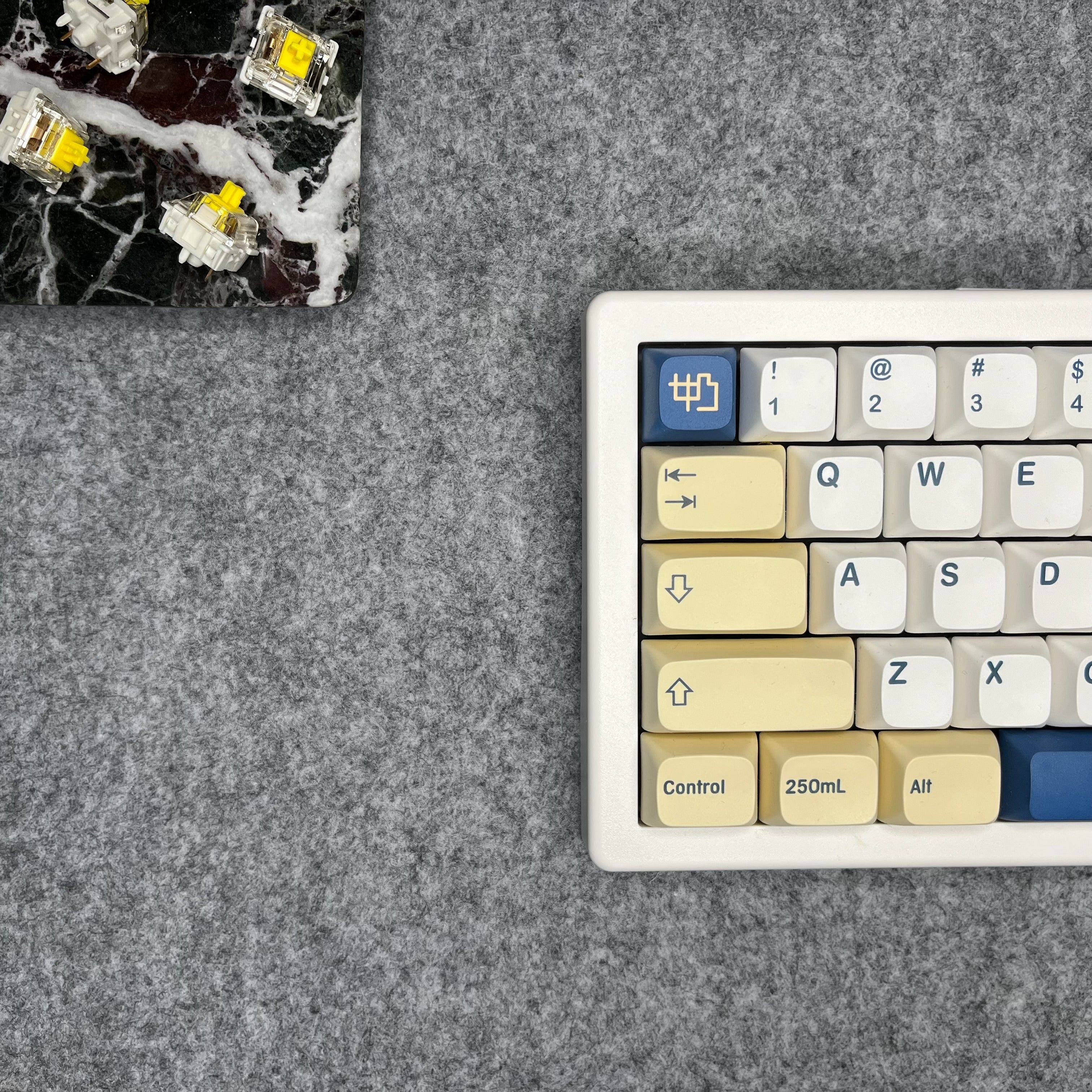
What is a Mechanical Keyboard?
Mechanical Keyboards: Basics and Specifications
Mechanical keyboards are a type of keyboard that has gained popularity in recent years and is preferred by many users. In this article, we will discuss the basic information about mechanical keyboards, their advantages, technical features and areas of use in detail.
What is a Mechanical Keyboard?
Mechanical keyboards are types of keyboards that have an independent switch under each key. These switches perform a specific mechanical movement when the key is pressed, making the typing or gaming experience more precise and satisfying. The switches on mechanical keyboards have a longer lifespan than membrane keyboards and can have a variety of features.
The switches used in mechanical keyboards usually consist of metal springs, mechanical components consisting of moving parts and an electronic circuit. Each switch has its own circuit, so the response time of the keys is very fast and when multiple keys are pressed simultaneously (NKRO - N-key rollover), all presses are detected without any problems.
Advantages of Mechanical Keyboards
Mechanical keyboards offer a number of benefits to their users. Here are the main ones:
Durability: Mechanical keyboards are equipped with switches that can withstand up to 50 million keystrokes, meaning many years of trouble-free use.
Key Feel and Feedback: Individual switches under each key provide distinct feedback with every press, giving the user a greater sense of control while typing or gaming.
Customizability: Mechanical keyboards can be personalized with different types of switches, lighting options, and keycaps. Users can choose switches based on their preferred feel and sound.
Anti-ghosting and NKRO: Many mechanical keyboards feature anti-ghosting and N-key rollover, which detects all key presses, even when multiple keys are pressed simultaneously.
Mechanical Keyboard Dimensions and Features
Mechanical keyboards are hardware that offers performance and customization, ideal for both gaming and professional use. These keyboards offer a variety of options according to the needs of users with different sizes and features. Here are the basic dimensions of mechanical keyboards and the features specific to these sizes:
1. Full-Size Keyboards
Full-size keyboards feature the standard 104 or 105 keys and feature all the essential keys such as a numeric keypad, function keys (F1-F12) and arrow keys. These keyboards are particularly ideal for accounting, data entry or general office use.
- Features:
- There is a numeric keypad (NumPad).
- Function keys and arrow keys are fully included.
- It usually has a wide and large structure.
- Suitable for those who like to multitask and have desks with ample space.
2. Tenkeyless (TKL) Keyboards
TKL keyboards are the numeric keypad-less version of full-size keyboards. They save about 80% of the size, making them more portable and compact.
- Features:
- It does not have a numeric keypad, so it has a more compact structure.
- There are function keys and directional keys.
- Ideal for smaller work areas.
- It provides an advantage in terms of portability, which can be preferred for gaming tournaments.
3. 75% Keyboards
75% keyboards, similar to TKL keyboards, do not include a number pad, but offer a more compact layout. The function keys, arrow keys, and some additional keys are placed closer together.
- Features:
- Function and arrow keys are located like on full-size keyboards, but in a more cramped arrangement.
- Compact design provides portability and saves desktop space.
- Suitable for users looking for modern and minimalist design.
4. 65% Keyboards
65% keyboards are a more scaled-down version of 75% keyboards. Arrow keys are usually present, but function keys are often absent or presented as a second layer.
- Features:
- There are arrow keys, but function keys are usually on the second layer.
- It offers a minimalist layout, which ensures ease of transportation.
- Ideal for users with small workspaces and those who prefer minimalist design.
5. 60% Keyboards
60% keyboards are one of the most compact types of mechanical keyboards. They do not have arrow keys, function keys, or a number pad.
- Features:
- Arrow keys and function keys are not available, but are usually accessible on the second layer.
- Offers a very compact design, maximizing portability.
- Suitable for users who want to save desktop space.
- It is frequently preferred by users who focus on portability and minimalism.
6. 40% Keyboards
40% keyboards are one of the smallest and most compact options for minimalist users, featuring only letter keys and a few additional keys.
- Features:
- There are no function keys, numeric keypad, or arrow keys.
- Provides maximum portability.
- Ideal for those who need to carry the keyboard and are looking for a minimalist design.
- Requires alternative editing and use of second layer.
Mechanical Switches: Types and Features
Switches used in mechanical keyboards can have different feel, sound, and actuation force. This variety allows users to choose the right keyboard for their needs and preferences.
Red Switches: Red switches have a linear structure and do not provide any tactile feedback or sound when the key is pressed. They are preferred by gamers because they offer a fast and smooth typing experience.
Blue Switches: These switches offer a distinct "click" sound and tactile feedback. They are preferred by writers and office users because they provide a distinct feel with each press.
Brown Switches: Suitable for both gaming and typing, these switches offer a light tactile feedback, but they aren't as loud as blue switches.
Technical Description:
Each switch contains a metal spring and moving parts. Depending on the type of switch, the spring may be harder or softer, which affects the force required to press the key and the feedback the key feels.
Mechanical Keyboard Usage Areas
Mechanical keyboards are a preferred equipment in different usage scenarios. Here are some common areas of use:
Gaming: Mechanical keyboards are popular among gamers for their fast response time and durability. They are especially preferred in FPS and MOBA type games.
Typing: Writers and programmers prefer mechanical keyboards for their tactile feedback that provides comfort during long typing sessions.
Office Use: Those working in an office environment can use mechanical keyboards to increase productivity and have a comfortable typing experience.
Mechanical Keyboard Maintenance and Cleaning
Mechanical keyboards require regular maintenance and cleaning to ensure their longevity. Dust, dirt, and other debris can accumulate under the keys over time, which can negatively impact their performance.
Cleaning the Keys: You can clean the inside of the keyboard by removing the keycaps. Using compressed air to remove dust is also an effective method.
Switch Maintenance: Some users prefer to oil the switches after a certain period of time. This process ensures smooth operation of the switches and extends their life.
Conclusion: Choosing a Mechanical Keyboard
Choosing a mechanical keyboard depends entirely on user needs and preferences. Choosing the right one among different switch types, features, and price ranges can greatly affect your typing or gaming experience. Whether you’re gaming or typing, choosing the right mechanical keyboard can provide long-lasting satisfaction.
In this guide, we aim to help you in this decision-making process by providing basic information and technical details about mechanical keyboards. Mechanical keyboards are a must-have piece of equipment for every user, both for their durability and the typing experience they offer.
Mechanical keyboards are a type of keyboard that has gained popularity in recent years and is preferred by many users. In this article, we will discuss the basic information about mechanical keyboards, their advantages, technical features and areas of use in detail.
What is a Mechanical Keyboard?
Mechanical keyboards are types of keyboards that have an independent switch under each key. These switches perform a specific mechanical movement when the key is pressed, making the typing or gaming experience more precise and satisfying. The switches on mechanical keyboards have a longer lifespan than membrane keyboards and can have a variety of features.
The switches used in mechanical keyboards usually consist of metal springs, mechanical components consisting of moving parts and an electronic circuit. Each switch has its own circuit, so the response time of the keys is very fast and when multiple keys are pressed simultaneously (NKRO - N-key rollover), all presses are detected without any problems.
Advantages of Mechanical Keyboards
Mechanical keyboards offer a number of benefits to their users. Here are the main ones:
Durability: Mechanical keyboards are equipped with switches that can withstand up to 50 million keystrokes, meaning many years of trouble-free use.
Key Feel and Feedback: Individual switches under each key provide distinct feedback with every press, giving the user a greater sense of control while typing or gaming.
Customizability: Mechanical keyboards can be personalized with different types of switches, lighting options, and keycaps. Users can choose switches based on their preferred feel and sound.
Anti-ghosting and NKRO: Many mechanical keyboards feature anti-ghosting and N-key rollover, which detects all key presses, even when multiple keys are pressed simultaneously.
Mechanical Keyboard Dimensions and Features
Mechanical keyboards are hardware that offers performance and customization, ideal for both gaming and professional use. These keyboards offer a variety of options according to the needs of users with different sizes and features. Here are the basic dimensions of mechanical keyboards and the features specific to these sizes:
1. Full-Size Keyboards
Full-size keyboards feature the standard 104 or 105 keys and feature all the essential keys such as a numeric keypad, function keys (F1-F12) and arrow keys. These keyboards are particularly ideal for accounting, data entry or general office use.
- Features:
- There is a numeric keypad (NumPad).
- Function keys and arrow keys are fully included.
- It usually has a wide and large structure.
- Suitable for those who like to multitask and have desks with ample space.
2. Tenkeyless (TKL) Keyboards
TKL keyboards are the numeric keypad-less version of full-size keyboards. They save about 80% of the size, making them more portable and compact.
- Features:
- It does not have a numeric keypad, so it has a more compact structure.
- There are function keys and directional keys.
- Ideal for smaller work areas.
- It provides an advantage in terms of portability, which can be preferred for gaming tournaments.
3. 75% Keyboards
75% keyboards, similar to TKL keyboards, do not include a number pad, but offer a more compact layout. The function keys, arrow keys, and some additional keys are placed closer together.
- Features:
- Function and arrow keys are located like on full-size keyboards, but in a more cramped arrangement.
- Compact design provides portability and saves desktop space.
- Suitable for users looking for modern and minimalist design.
4. 65% Keyboards
65% keyboards are a more scaled-down version of 75% keyboards. Arrow keys are usually present, but function keys are often absent or presented as a second layer.
- Features:
- There are arrow keys, but function keys are usually on the second layer.
- It offers a minimalist layout, which ensures ease of transportation.
- Ideal for users with small workspaces and those who prefer minimalist design.
5. 60% Keyboards
60% keyboards are one of the most compact types of mechanical keyboards. They do not have arrow keys, function keys, or a number pad.
- Features:
- Arrow keys and function keys are not available, but are usually accessible on the second layer.
- Offers a very compact design, maximizing portability.
- Suitable for users who want to save desktop space.
- It is frequently preferred by users who focus on portability and minimalism.
6. 40% Keyboards
40% keyboards are one of the smallest and most compact options for minimalist users, featuring only letter keys and a few additional keys.
- Features:
- There are no function keys, numeric keypad, or arrow keys.
- Provides maximum portability.
- Ideal for those who need to carry the keyboard and are looking for a minimalist design.
- Requires alternative editing and use of second layer.
Mechanical Switches: Types and Features
Switches used in mechanical keyboards can have different feel, sound, and actuation force. This variety allows users to choose the right keyboard for their needs and preferences.
Red Switches: Red switches have a linear structure and do not provide any tactile feedback or sound when the key is pressed. They are preferred by gamers because they offer a fast and smooth typing experience.
Blue Switches: These switches offer a distinct "click" sound and tactile feedback. They are preferred by writers and office users because they provide a distinct feel with each press.
Brown Switches: Suitable for both gaming and typing, these switches offer a light tactile feedback, but they aren't as loud as blue switches.
Technical Description:
Each switch contains a metal spring and moving parts. Depending on the type of switch, the spring may be harder or softer, which affects the force required to press the key and the feedback the key feels.
Mechanical Keyboard Usage Areas
Mechanical keyboards are a preferred equipment in different usage scenarios. Here are some common areas of use:
Gaming: Mechanical keyboards are popular among gamers for their fast response time and durability. They are especially preferred in FPS and MOBA type games.
Typing: Writers and programmers prefer mechanical keyboards for their tactile feedback that provides comfort during long typing sessions.
Office Use: Those working in an office environment can use mechanical keyboards to increase productivity and have a comfortable typing experience.
Mechanical Keyboard Maintenance and Cleaning
Mechanical keyboards require regular maintenance and cleaning to ensure their longevity. Dust, dirt, and other debris can accumulate under the keys over time, which can negatively impact their performance.
Cleaning the Keys: You can clean the inside of the keyboard by removing the keycaps. Using compressed air to remove dust is also an effective method.
Switch Maintenance: Some users prefer to oil the switches after a certain period of time. This process ensures smooth operation of the switches and extends their life.
Conclusion: Choosing a Mechanical Keyboard
Choosing a mechanical keyboard depends entirely on user needs and preferences. Choosing the right one among different switch types, features, and price ranges can greatly affect your typing or gaming experience. Whether you’re gaming or typing, choosing the right mechanical keyboard can provide long-lasting satisfaction.
In this guide, we aim to help you in this decision-making process by providing basic information and technical details about mechanical keyboards. Mechanical keyboards are a must-have piece of equipment for every user, both for their durability and the typing experience they offer.
Next post






